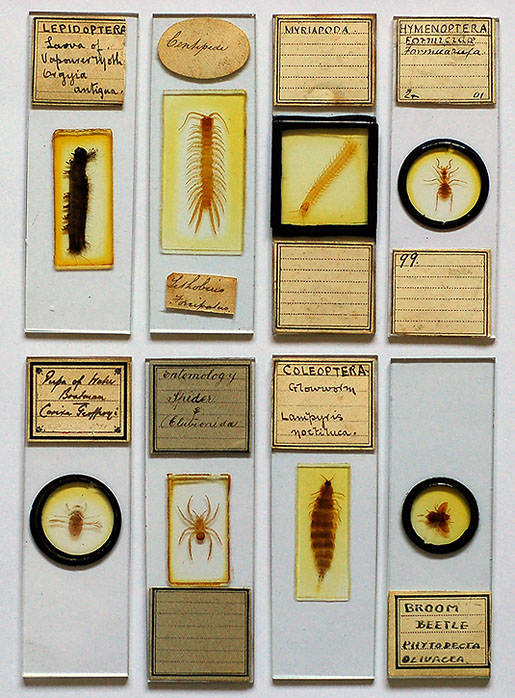
None of the slides are by named mounters but seem to be of good to excellent quality.
|
Gallery:
Further images of whole mounts of insect and other arthropod slides. Taken with a 35mm film scanner. by David Walker, UK |
In March 2006 I shared some images of Victorian whole insect slides by an unknown mounter 'photographed' with a 35 mm Minolta slide scanner. Named examples by the most famous mounters often attract premium prices but unnamed examples of excellent quality can come up for sale and are much more reasonably priced; the anonymous slides below were a very modest price.
Using a 35 mm film scanner for imaging microscope slides is well established, with some makers like Nikon selling a microscope slide holder for their Coolscan range (albeit a rather expensive accessory, one can be readily made from a 35 mm plastic slide mount). As I have a film scanner for photo work, I like using it for suitable microscope slide subjects.
The ability to evenly illuminate and image a large mount in a single 'photograph' without image stitching is very handy. Although the Minolta scanner's practical resolution was estimated to be ca. 7 - 10 um (see May 2005 article), i.e half that of a 3.5x NA 0.10 compound microscope objective, high quality images are possible if the subject has predominantly gross features and fills most of the film frame area.

None
of the slides are by named mounters but seem to be of good to excellent quality.
Image
Gallery using a Minolta Dimage Scan Elite 5400 dpi 35 mm film scanner
Note
that detail in the original scan is lost on drastic resizing for the web page;
the master scans can be up to 5000x3500 pixels despite the insect not filling the
35 mm scan area.
'Larva
of vapourer moth Orgyia antigua' Unnamed mounter. 25mm
long
The larva is beautifully laid out and attractive to look at both
visually and under the microscope. In real life the larva is very colourful but the subtle greys and browns of the processed
mount are also attractive.
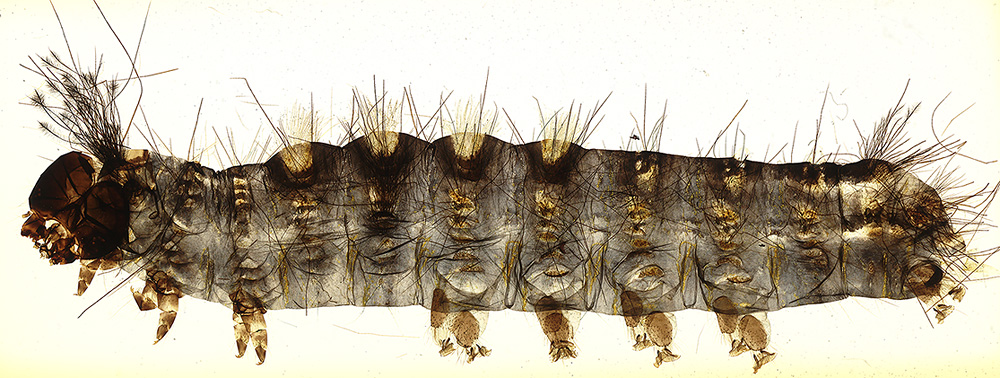
'Invert'
colour in editing software can sometimes give an interesting pseudo darkfield
effect with some brightfield images, as tried below.
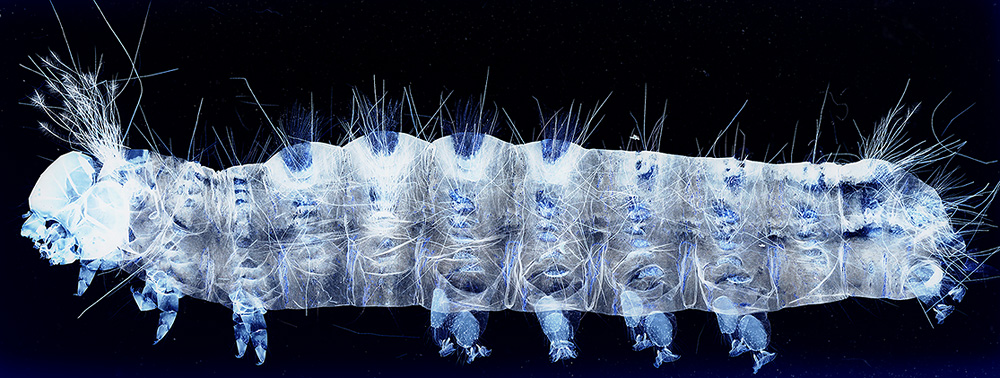
"Centipede Lethobius forficatus". Unnamed mounter. 29 mm long
I
enjoy studying and handling most live bugs and beasties found in the UK but
have never been a great fan of centipedes (or earwigs). Perhaps it's those fierce
looking pincers; they are safe enough critters in the UK but I gather some more
exotic centipedes need to be treated with some care. This species occurs in
the UK and is described as both the 'common' and 'brown' centipede apparently.
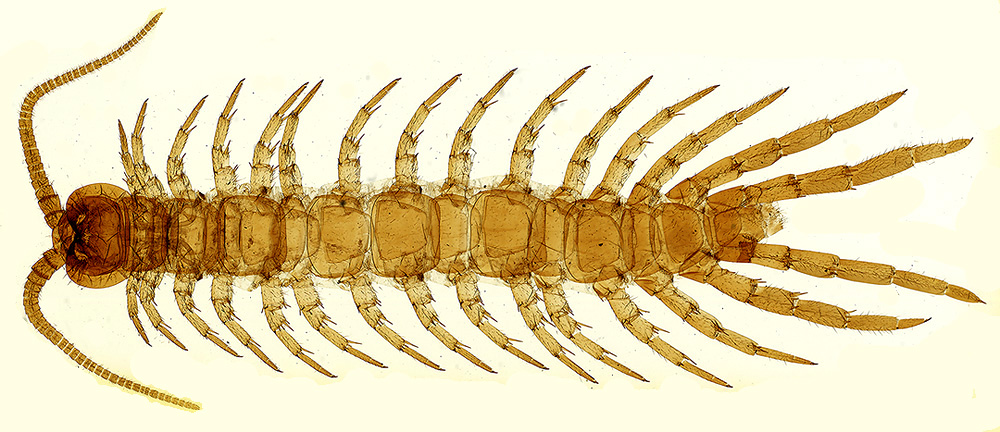
Again
the 'invert' is attractive if a blue centipede is acceptable ...
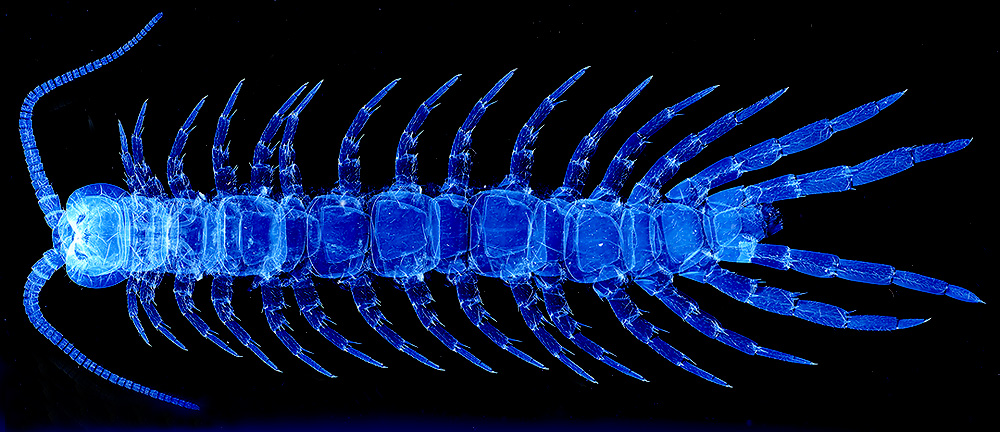
"Spider, male, Clubionidae" Unnamed mounter. Length 15.5 mm
This is a beautifully laid out specimen to the author's non-specialist eye with barely a hair out of place. The subject's tonal range was flatter than shown here but was increased somewhat with 'levels' in software. I'm surprised how well the scanner copes with this sort of subject, the film equivalent of a very 'thin' i.e. underexposed film. The Minolta scanner has a very useful manual focus feature for tricky subjects and allows a tiny contrasty area to be selected and used to focus the slide.
Thirty five species in this spider family are found in Britain and Northern Europe and are mostly nighthunters according to 'Collins Field Guide to Spiders' by M J Roberts.
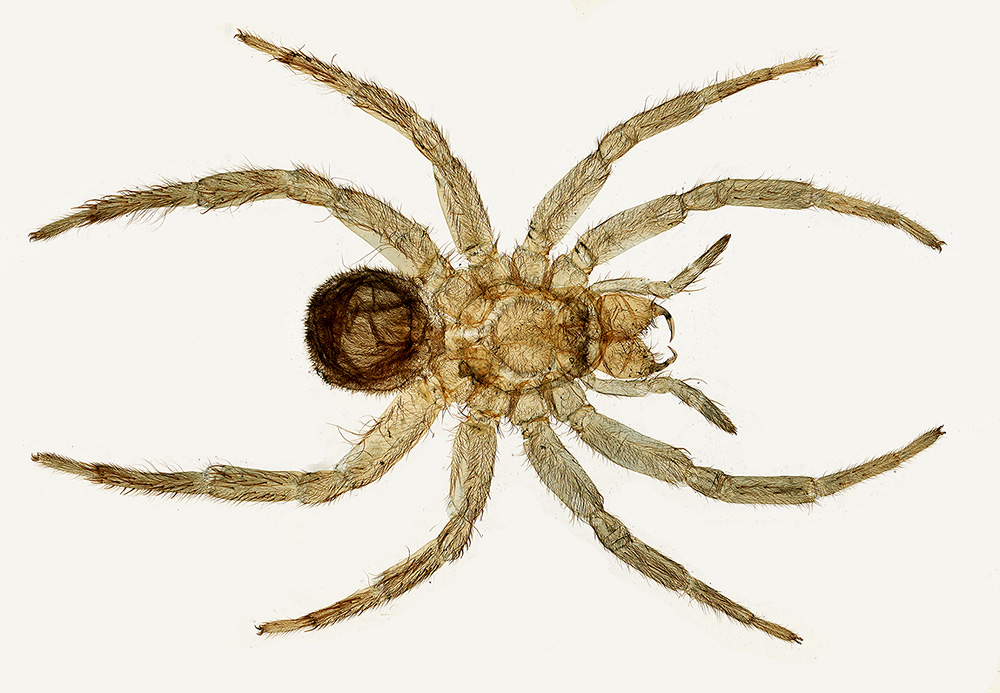
Again
an 'invert', but a blue spider looked a bit odd so the image was desaturated.
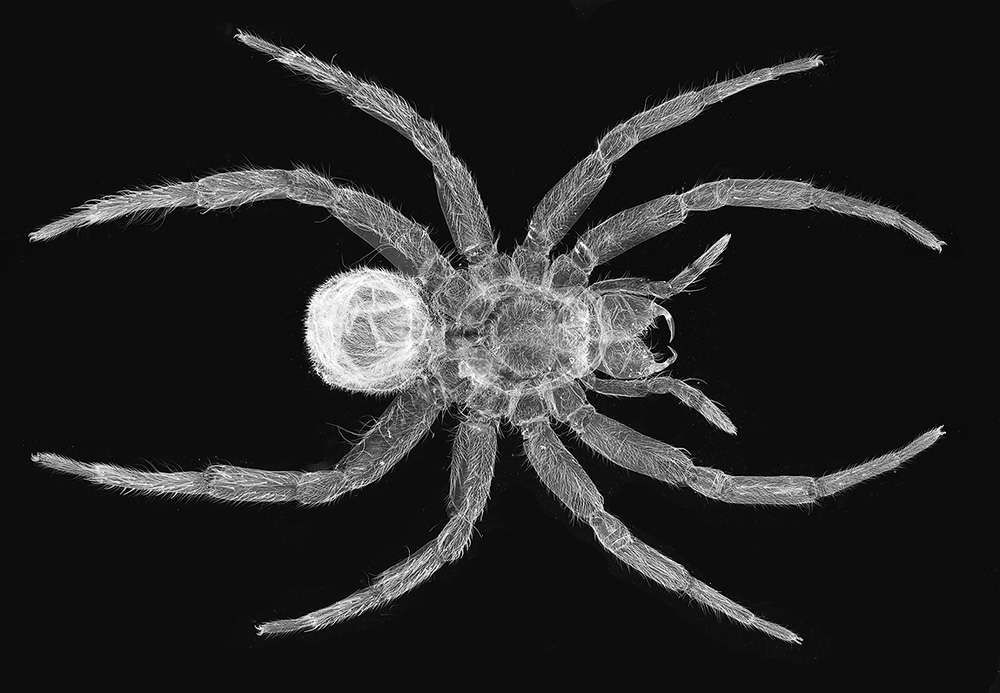
"Pupa of water boatman Corixa Geoffrey i" Unnamed mounter. 13 mm wide including legs.
This mount also had a very flat tonal range, so after scanning, 'levels' were adjusted before an 'invert' and colour removal to create a pseudo darkfield to highlight the leg structures which are ideally suited for swimming.
I'm not entirely certain whether 'Geoffrey' or 'Geoffrey i' is the species name (which I can't find a reference to), or is a reference to a scientist associated with the genus; some taxonomic listings on Google for 'Corixa, Geoffrey' do come up.
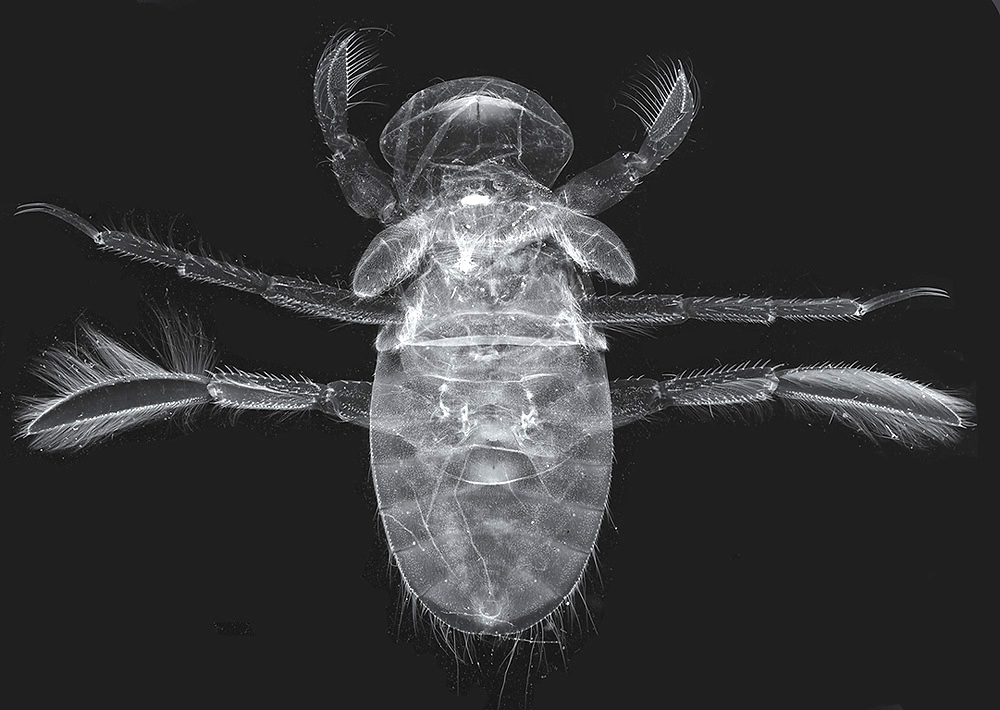
"Myriapoda" Unnamed mounter 25 mm long
The Myriapoda includes both the centipedes and millipedes and wasn't identified further on the slide label. Some references found defined the group as a sub-phylum and others a class. The 'inverted' monochrome derivative of the scan is shown below.

"Glow worm Lampyris noctiluca" Unnamed mounter. 25 mm long.
I'm not sure whether this is the flightless female that emits the well known greenish light to lure the male, or is a male larva. The 'NBN Gateway' online records for glow worm distribution in the author's home area seem very scant over the past two decades, so perhaps not surprising that I haven't come across any myself. The 'inverted' monochrome derivative of the glow worm scan is shown below.
Incidentally, for fellow UK amateur naturalists, the NBN Gateway (National Biodiversity Network) resource, is a very useful facility for checking distribution of well recorded UK fauna and flora.
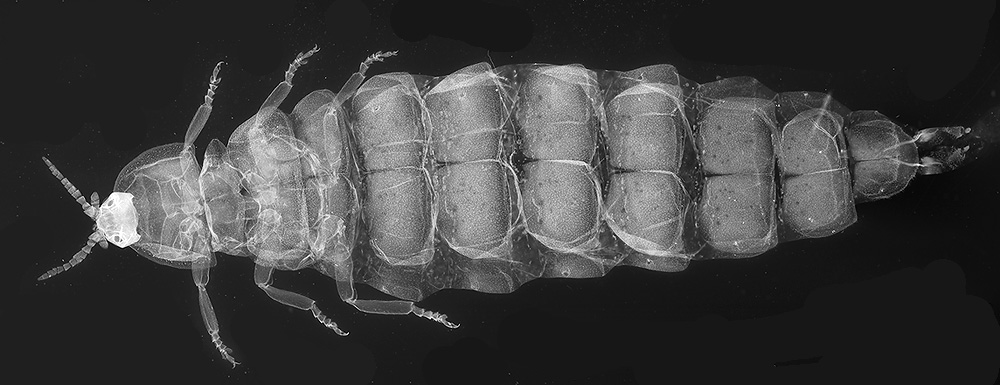
"Broom beetle Phytodecta olivacea" Unnamed mounter. Width 7.5 mm including open wings
This beetle apparently takes its name because of its fondness for broom, an attractive plant in the pea family with yellow flowers. The NBN Gateway Resource shows a number of UK records and automatically changes its name to Gonioctena olivacea, so it seems the taxonomists have been busy again. A New Zealand website reports that an application is being considered to import the beetle for broom control.
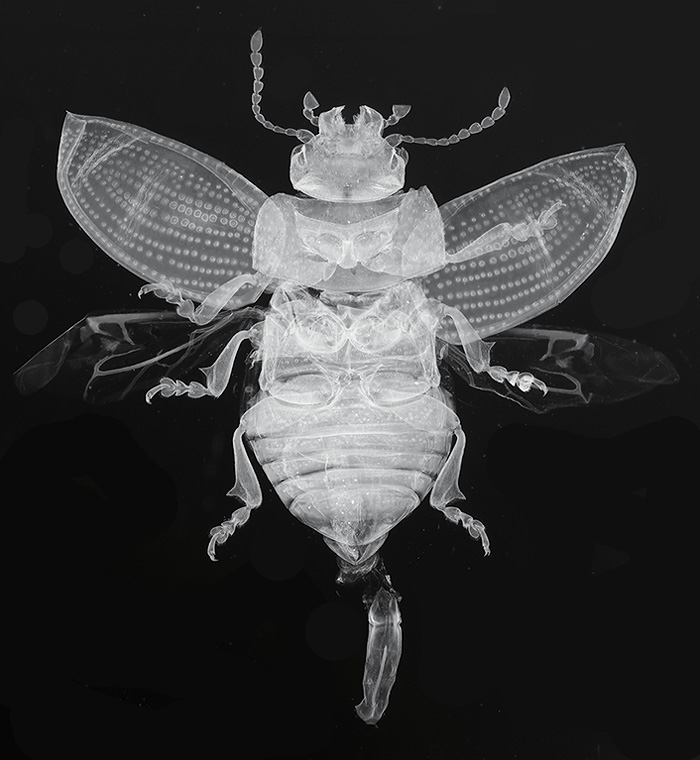
"Formica rufa" Unnamed mounter. Length 13 mm.
This is the familiar wood ant which doesn't have a sting but can eject formic acid from its posterior if upset. An attractively laid out specimen, again a low contrast specimen which benefited from 'levels' adjustment and 'invert' with desaturation.
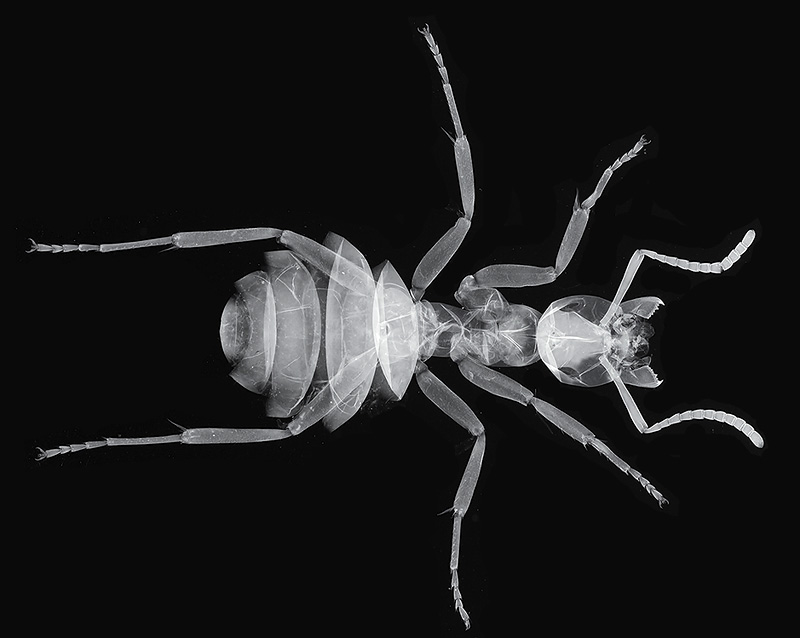
Comments to the
author
David
Walker
are welcomed.
All images
by the author.
References
1)
Collins
Guide to the Insects of Britain and Western Europe by Michael Chinery. 1986.
2)
Collins Field Guide. Spiders of Britain and Northern Europe by Michael
J Roberts, 1996.
Published in the May 2008 edition of Micscape.
Please report any Web problems or offer general comments to the Micscape Editor .
Micscape is the on-line monthly magazine of the Microscopy UK web site at Microscopy-UK
© Onview.net Ltd, Microscopy-UK, and all contributors 1995
onwards. All rights reserved.
Main site is
at www.microscopy-uk.org.uk
with full mirror
at www.microscopy-uk.net
.